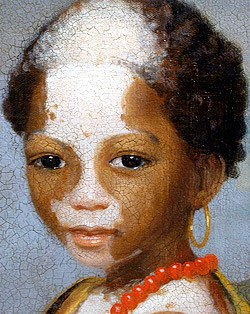Pairing up is sometimes paramount to life. On the molecular scale, dimerization in our bodies is at the heart of many fundamental biological processes, such as the transduction of signals from the outside of a cell to the inside for instance. Split two molecules apart and, just like taking the propeller away from a ship, things are sure to change drastically. Signal transduction, on which life depends, is hugely due to protein-protein interaction. A ligand recognises its receptor, binds to it, thereby triggering off biological processes downstream. In the case of Kit ligand, and its receptor Kit, their binding is subject to the dimerization of both the ligand and its receptor, following which signals are transduced further downstream triggering off other biological processes. Kit ligand and Kit are a case of substantial conformational change on the molecular level - dimerization but also angles which bring about flexibility - that are necessary for Kit to get on with its job.
Kit ligand is a cytokine. When it binds to its membrane-anchored receptor - Kit - it activates a tyrosine kinase domain which ultimately initiates a horde of cellular responses downstream. This only happens once Kit has dimerized - a structural change which is driven by Kit ligand whose sole function seems to be to bring together the two Kit monomers. When this happens, Kit undergoes multiple autophosphorylations which stimulate downstream signalling pathways involved in hematopoiesis as well as the survival, proliferation and differentiation of mast cells, melanocytes and germ cells.
Kit ligand is both soluble and membrane-bound - though, under physiological conditions and extracellular, it seems to exist, mainly, as a monomer. Each monomer is a short chain of four helix bundles, characteristic of a helical cytokine topology - though Kit ligand structure is quite unique, and it is thought that its dimerization probably plays a regulatory role in its binding affinity to Kit receptor, as well as in its own activation.

The two Kit ligand monomers dimerize head to head, thus forming a longer chain, which is bent in its middle - possibly giving Kit ligand the power it needs to bind to Kit and then bring about the receptor's dimerization. Kit ligand then binds to Kit - where one end slips into one Kit monomer, and the other slips into the other Kit monomer - a little like two hands grabbing each Kit monomer to bring them closer to one another. In its middle, the Kit ligand dimer is connected by a flexible joint. Kit ligand is thus perpendicular to the Kit monomers. The overall structure sports a large cavity in its centre. And the whole complex is stabilized by a host of additional interactions, also mediated by the conformational changes of Kit ligand and its receptor.
Amongst other pathways, the Kit ligand-Kit complex mediates a pathway involved in pigmentation, i.e. melanocyte differentiation and proliferation. Mutations in Kit receptor, for example, are known to be responsible for the congenital pigmentation disorder, piebaldism, characterised by depigmented patches on the body. In the early 1900s, a black African boy became a famous case of piebaldism when he was taken from his parents in the Caribbean, at the early age of 15 months, and sold in England to John Richardson, a travelling showman. The small boy was known as the "Beautiful Spotted Negro Boy" and became the star attraction. He died three years later - no doubt due, in part, to the number of hours he was exhibited on a daily basis.
Kit ligand also seems to be the cause of another kind of pigmentation, of a very different nature: blond hair. There is a variant which is found almost exclusively - and in high frequency - in populations of European ancestry and seems to be responsible for fair hair. Characteristically, the further humans live from the equator, the lighter their eye, hair and skin pigmentation is. Pigmentation depends on the type of melanin synthesized, and the size, shape and quantity of the cells they belong to - the melanosomes. The lighter skin of Europeans is probably to facilitate the synthesis of vitamin D3 at a latitude where levels of UVR are low. However, the physiological benefits of lighter eyes and hair remain a mystery.
Understanding, in its minute detail, what goes on between Kit ligand and its receptor will help to clarify the mechanisms of receptor activation as a whole. And the more the structure of such a complex is known, the more it can be used to design novel therapeutic interventions for the treatment of cancers and other diseases driven by activated receptors. Kit ligand, for instance, is known to promote hematopoietic recovery; in combination with other cytokines, it is used to reduce the haematological damage of chemotherapy. The design of Kit ligand analogues could be more potent, for example, and also be used to treat anaemia. As for the pigmentation properties of Kit ligand, a greater insight into its workings would not only help scientist track down past human migration from Africa to the rest of the world, but could also be a promising candidate for forensic geneticists, as well as in the study of eye and skin diseases that are known to be related with such traits.

